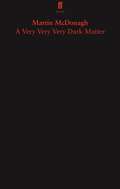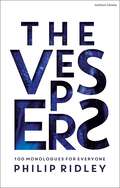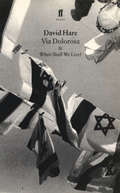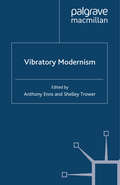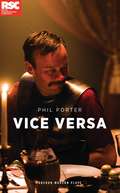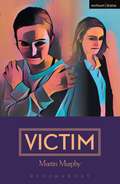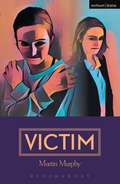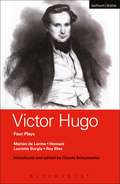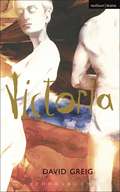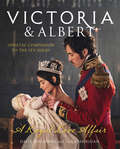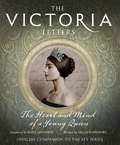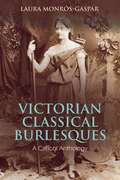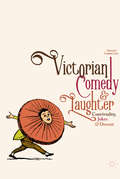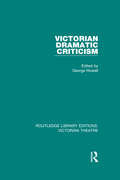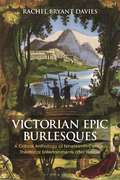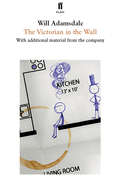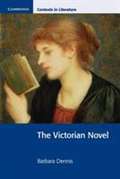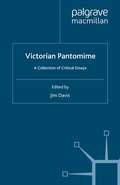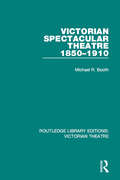- Table View
- List View
A Very Very Very Dark Matter
by Martin McDonaghIn a townhouse in Copenhagen works Hans Christian Andersen, a teller of exquisite and fantastic children's tales beloved by millions. But the true source of his stories dwells in his attic upstairs, her existence a dark secret kept from the outside world.Dangerous, twisted and funny, Martin McDonagh's new play travels deep into the abysses of the imagination. A Very Very Dark Matter premiered at the Bridge Theatre, London, in October 2018.
The Vespers: 100 Monologues for Everyone (Audition Speeches)
by Philip RidleyHave you ever struggled to find the perfect monologue?Do you want to lose yourself in an unforgettable story?Do you want to be…transported?Philip Ridley's The Vespers is a major work by a major writer. 100 original, self-contained monologues for actors (and readers) of all genders, all ages, and all levels of experience. Varying in length, style and structure – from the surreally comic to the heartbreakingly tragic – this is an essential toolkit for any actor (or anyone who enjoys a good story) with an introduction by Cath Badham, Lecturer in Performance at the University of Derby, UK.
The Vespers: 100 Monologues for Everyone (Audition Speeches)
by Philip RidleyHave you ever struggled to find the perfect monologue?Do you want to lose yourself in an unforgettable story?Do you want to be…transported?Philip Ridley's The Vespers is a major work by a major writer. 100 original, self-contained monologues for actors (and readers) of all genders, all ages, and all levels of experience. Varying in length, style and structure – from the surreally comic to the heartbreakingly tragic – this is an essential toolkit for any actor (or anyone who enjoys a good story) with an introduction by Cath Badham, Lecturer in Performance at the University of Derby, UK.
Via Dolorosa
by David Hare'My whole life, it's been assumed, Western civilisation is an old bitch gone in the teeth. And so people say, go to Israel. Because in Israel at least people are fighting. In Israel, they're fighting for something they believe in.' Via DolorosaIn 1997, after many invitations, the 50-year-old British playwright resolved finally to visit the 50-year-old State of Israel. The resulting play, written to be performed by the author himself, offers a meditation on an extraordinary trip to both Israel and the Palestinian territory, which leaves Hare questioning his own values as searchingly as the powerful beliefs of those he met. Accompanying Via Dolorosa is the 1996 lecture When Shall We Live?, which also addresses questions of art and faith. Originally given in Westminster Abbey as the Eric Symes Memorial Lecture, it attracted record correspondence when an abridged version was published in the Daily Telegraph.
Vibratory Modernism
by Anthony Enns and Shelley TrowerVibratory Modernism is a collection of original essays that show how vibrations provide a means of bridging science and art - two fields that became increasingly separate in the nineteenth and early twentieth centuries.
Vice Versa (Oberon Modern Plays)
by Phil PorterA side-splitting comedy romp, lovingly ripped off from the Roman comedies of Plautus. A wily servant and a pair of young lovers team up to bamboozle a pompous general in this riotous new comedy. Dodgy disguises, comic capers and a talking monkey create pandemonium as the tricksters try to save the girl, free the servant and live to tell the tale!
Victim (Modern Plays)
by Martin MurphyPerformed as a one-woman show, Victim follows the power struggle between prison guard Tracey and criminal Siobhan as they come face-to-face with a notorious inmate. As they both muse on their lives outside the prison walls, we come to learn of their anxieties and their hardships as they confront the realities of prison life. Darkly comic and at times chilling, Victim is a thoughtful reflection on modern life and how easily it can be turned upside down.This edition was published to coincide with Bruised Sky's production at Pleasance Courtyard, Edinburgh, August 2017.
Victim (Modern Plays)
by Martin MurphyPerformed as a one-woman show, Victim follows the power struggle between prison guard Tracey and criminal Siobhan as they come face-to-face with a notorious inmate. As they both muse on their lives outside the prison walls, we come to learn of their anxieties and their hardships as they confront the realities of prison life. Darkly comic and at times chilling, Victim is a thoughtful reflection on modern life and how easily it can be turned upside down.This edition was published to coincide with Bruised Sky's production at Pleasance Courtyard, Edinburgh, August 2017.
Victor Hugo: Marion de Lorme; Hernani; Lucretia Borgia; Ruy Blas (World Classics)
by Victor HugoFour previously untranslated plays for the World Classics seriesHere are four characteristic and hugely important dramas by one of the most famous and influential European writers of the last two hundred years, translated into English for the first time, and in highly playable versions. An essential collection for students of both French and Drama
Victor Hugo: Marion de Lorme; Hernani; Lucretia Borgia; Ruy Blas (World Classics)
by Victor Hugo William D. Howarth John Golder Richard HandFour previously untranslated plays for the World Classics series.Here are four characteristic and hugely important dramas by one of the most famous and influential European writers of the last two hundred years, translated into English for the first time, and in highly playable versions. An essential collection for students of both French and Drama
Victoria (Modern Plays)
by David GreigA new play for the Royal Shakespeare Company"World's moving. People moving. We've only to cross the sea. Same sea we're looking at. The world's waiting for us. We've only to take our place it." In 1936, 1974 and 1996, a woman shapes dramatic events in a rural community on the Scottish coast, reflecting the shifting political and social fabric of Britain in the 20th century. Victoria will received its World première in London at the Royal Shakespeare Company in 2000."David Greig is the most consistently interesting, prolific and artistically ambitious writer of his generation" (Scotsman)
Victoria (Modern Plays)
by David GreigA new play for the Royal Shakespeare Company"World's moving. People moving. We've only to cross the sea. Same sea we're looking at. The world's waiting for us. We've only to take our place it." In 1936, 1974 and 1996, a woman shapes dramatic events in a rural community on the Scottish coast, reflecting the shifting political and social fabric of Britain in the 20th century. Victoria will received its World première in London at the Royal Shakespeare Company in 2000."David Greig is the most consistently interesting, prolific and artistically ambitious writer of his generation" (Scotsman)
Victoria and Albert – A Royal Love Affair: A Royal Love Affair
by Daisy Goodwin Sara SheridanThe second tie-in to ITV drama Victoria unveils the complex, passionate relationship of Victoria and Albert.
The Victoria Letters: The Heart And Mind Of A Young Queen
by Helen RappaportThe official companion to ITV’s hotly anticipated new drama, The Victoria Letters delves into the private writings of the young Queen Victoria, painting a vivid picture of the personal life of one of England’s greatest monarchs.
Victorian Classical Burlesques: A Critical Anthology (Bloomsbury Studies in Classical Reception)
by Laura Monros-GasparThe Victorian classical burlesque was a popular theatrical genre of the mid-19th century. It parodied ancient tragedies with music, melodrama, pastiche, merciless satire and gender reversal. Immensely popular in its day, the genre was also intensely metatheatrical and carries significance for reception studies, the role and perception of women in Victorian society and the culture of artistic censorship.This anthology contains the annotated text of four major classical burlesques: Antigone Travestie (1845) by Edward L. Blanchard, Medea; or, the Best of Mothers with a Brute of a Husband (1856) by Robert Brough, Alcestis; the Original Strong-Minded Woman (1850) and Electra in a New Electric Light (1859) by Francis Talfourd. The cultural and textual annotations highlight the changes made to the scripts from the manuscripts sent to the Lord Chamberlain's office and, by explaining the topical allusions and satire, elucidate elements of the burlesques' popular cultural milieu.An in-depth critical introduction discusses the historical contexts of the plays' premieres and unveils the cultural processes behind the reception of the myths and original tragedies. As the burlesques combined spectacular effects with allusions to contemporary affairs, ambivalent and provocative attitudes to women, the plays represent an essential tool for reading the social history of the era.
Victorian Classical Burlesques: A Critical Anthology (Bloomsbury Studies in Classical Reception)
by Laura Monros-GasparThe Victorian classical burlesque was a popular theatrical genre of the mid-19th century. It parodied ancient tragedies with music, melodrama, pastiche, merciless satire and gender reversal. Immensely popular in its day, the genre was also intensely metatheatrical and carries significance for reception studies, the role and perception of women in Victorian society and the culture of artistic censorship.This anthology contains the annotated text of four major classical burlesques: Antigone Travestie (1845) by Edward L. Blanchard, Medea; or, the Best of Mothers with a Brute of a Husband (1856) by Robert Brough, Alcestis; the Original Strong-Minded Woman (1850) and Electra in a New Electric Light (1859) by Francis Talfourd. The cultural and textual annotations highlight the changes made to the scripts from the manuscripts sent to the Lord Chamberlain's office and, by explaining the topical allusions and satire, elucidate elements of the burlesques' popular cultural milieu.An in-depth critical introduction discusses the historical contexts of the plays' premieres and unveils the cultural processes behind the reception of the myths and original tragedies. As the burlesques combined spectacular effects with allusions to contemporary affairs, ambivalent and provocative attitudes to women, the plays represent an essential tool for reading the social history of the era.
Victorian Comedy and Laughter: Conviviality, Jokes and Dissent
by Louise LeeThis innovative collection of essays is the first to situate comedy and laughter as central rather than peripheral to nineteenth century life. Victorian Comedy and Laughter: Conviviality,Jokes and Dissent offers new readings of the works of Charles Dickens, Edward Lear,George Eliot, George Gissing, Barry Pain and Oscar Wilde, alongside discussions of much-loved Victorian comics like Little Tich, Jenny Hill, Bessie Bellwood and Thomas Lawrence. Tracing three consecutive and interlocking moods in the period, all of the contributors engage with the crucial critical question of how laughter and comedy shaped Victorian subjectivity and aesthetic form. Malcolm Andrews, Jonathan Buckmaster and Peter Swaab explore the dream of print culture togetherness that is conviviality, while Bob Nicholson, Louise Lee, Ann Featherstone,Louise Wingrove and Oliver Double discuss the rise-on-rise of the Victorian joke — both on the page and the stage — while Peter Jones, Jonathan Wild and Matthew Kaiser consider the impassioned debates concerning old and new forms of laughter that took place at the end of the century.
Victorian Dramatic Criticism (Routledge Library Editions: Victorian Theatre)
by George RowellOriginally published in 1971. The Victorian Age was one of popular theatre and increasingly popular journalism. One manifestation of this journalism was the emergence of the dramatic critic from the anonymity and brevity which had previously characterized periodical treatment of the theatre. If Victorian theatre is regarded as existing essentially thirty years before Victoria acceded and continuing until the outbreak of war in 1914, the names of Lamb, Leigh Hunt and Hazlitt at one end, and of Beerbohm and MacCarthy at the other, can be added to a list that includes Lewes, James, Archer, Walkley, Shaw and Montague. All these writers, and others less famous, are represented in this selection. By selecting the articles on the basis of the play in performance, rather than the play as literature, and by arranging them according to various aspects of the theatrical process, this book builds up a skilful and lively picture of the contemporary theatre at work, in the words of its leading commentators. The anthology successfully conveys the qualities of abundance and vitality to characteristic of Victorian theatre.
Victorian Dramatic Criticism (Routledge Library Editions: Victorian Theatre)
by George RowellOriginally published in 1971. The Victorian Age was one of popular theatre and increasingly popular journalism. One manifestation of this journalism was the emergence of the dramatic critic from the anonymity and brevity which had previously characterized periodical treatment of the theatre. If Victorian theatre is regarded as existing essentially thirty years before Victoria acceded and continuing until the outbreak of war in 1914, the names of Lamb, Leigh Hunt and Hazlitt at one end, and of Beerbohm and MacCarthy at the other, can be added to a list that includes Lewes, James, Archer, Walkley, Shaw and Montague. All these writers, and others less famous, are represented in this selection. By selecting the articles on the basis of the play in performance, rather than the play as literature, and by arranging them according to various aspects of the theatrical process, this book builds up a skilful and lively picture of the contemporary theatre at work, in the words of its leading commentators. The anthology successfully conveys the qualities of abundance and vitality to characteristic of Victorian theatre.
Victorian Epic Burlesques: A Critical Anthology of Nineteenth-Century Theatrical Entertainments after Homer (Bloomsbury Studies in Classical Reception)
by Rachel Bryant DaviesThis anthology presents annotated scripts of four major burlesques by key playwrights: Melodrama Mad! or, the Siege of Troy by Thomas John Dibdin (1819); Telemachus; or, the Island of Calypso by J.R. Planché (1834); The Iliad; or, the Siege of Troy by Robert Brough (1858) and Ulysses; or the Ironclad Warriors and the Little Tug of War by F.C. Burnand (1865). Beloved legend, archaeological riddle and educational staple: Homer's epic tales of the Trojan War and its aftermath were vividly reimagined in nineteenth-century Britain. Classical burlesques-exceptionally successful theatrical entertainments-continually mined the Iliad and Odyssey to lucrative comic effect. Burlesques combined song, dance and slapstick comedy with an eclectic kaleidoscope of topical allusions. From namedropping boxing legends to recasting Shakespearean combats, epic adaptations overflow with satirical commentary on politics, cultural highlights and everyday current affairs. In uncovering Homer's irreverently playful afterlife, this selection showcases burlesque's development and wide appeal. The critical introduction analyses how these plays contested the accessibility of classical antiquity and dramatic performance. Textual and literary annotations, with contemporary illustrations, illuminate the juxtaposed sources to establish these repackaged epics as indispensable tools for unlocking nineteenth-century social, cultural and political history. Resources for further study are available online.
Victorian Epic Burlesques: A Critical Anthology of Nineteenth-Century Theatrical Entertainments after Homer (Bloomsbury Studies in Classical Reception)
by Rachel Bryant DaviesThis anthology presents annotated scripts of four major burlesques by key playwrights: Melodrama Mad! or, the Siege of Troy by Thomas John Dibdin (1819); Telemachus; or, the Island of Calypso by J.R. Planché (1834); The Iliad; or, the Siege of Troy by Robert Brough (1858) and Ulysses; or the Ironclad Warriors and the Little Tug of War by F.C. Burnand (1865). Beloved legend, archaeological riddle and educational staple: Homer's epic tales of the Trojan War and its aftermath were vividly reimagined in nineteenth-century Britain. Classical burlesques-exceptionally successful theatrical entertainments-continually mined the Iliad and Odyssey to lucrative comic effect. Burlesques combined song, dance and slapstick comedy with an eclectic kaleidoscope of topical allusions. From namedropping boxing legends to recasting Shakespearean combats, epic adaptations overflow with satirical commentary on politics, cultural highlights and everyday current affairs. In uncovering Homer's irreverently playful afterlife, this selection showcases burlesque's development and wide appeal. The critical introduction analyses how these plays contested the accessibility of classical antiquity and dramatic performance. Textual and literary annotations, with contemporary illustrations, illuminate the juxtaposed sources to establish these repackaged epics as indispensable tools for unlocking nineteenth-century social, cultural and political history. Resources for further study are available online.
The Victorian in the Wall
by Will AdamsdaleLatte-land. Power-prams, Grand Design knock-throughs, organic everything. A work-shy writer discovers a Victorian man living in the wall of his flat. Everyone's pretty surprised. Adjustments need to be made. Can the strange visitor unlock his hopeless career? His flagging relationship? A story buried in these walls for over a century? (Doubt it. Maybe. Yes.) Contains jokes, songs, banging on recycling boxes, a talking fridge. Will Adamsdale's The Victorian in the Wall premiered at the Royal Court Theatre, London, in May 2013.
The Victorian Novel (PDF)
by Barbara Dennis Adrian BarlowCritical introductions to a range of literary topics and genres. This book invites readers to reflect on the whole phenomenon of the Victorian novel and its role in dissecting and informing the society which produced it. The reasons for the growth of the novel and its spectacular success is also examined and discussed. Texts and extracts from a selection of Victorian novels and essays, including some material that readers will be unfamiliar with, help to provide a broader understanding of the range of Victorian fiction. Authors include: Thomas Carlyle, Charles Dickens, George Eliot, Anthony Trollope and Max Beerbohm.
Victorian Pantomime: A Collection of Critical Essays
by Jim DavisFeaturing contributions by new and established nineteenth-century theatre scholars, this collection of critical essays is the first of its kind devoted solely to Victorian pantomime. It takes us through the various manifestations of British pantomime in the Victorian period and its ambivalent relationship with Victorian values.
Victorian Spectacular Theatre 1850-1910 (Routledge Library Editions: Victorian Theatre)
by Michael R. BoothOriginally published in 1981. This study concentrates on one aspect of Victorian theatre production in the second half of the nineteenth century – the spectacular, which came to dominate certain kinds of production during that period. A remarkably consistent style, it was used for a variety of dramatic forms, although surrounded by critical controversy. The book considers the theories and practice of spectacle production as well as the cultural and artistic movements that created the favourable conditions in which spectacle could dominate such large areas of theatre for so many years. It also discusses the growth of spectacle and the taste of the public for it, examining the influence of painting, archaeology, history, and the trend towards realism in stage production. An explanation of the working of spectacle in Shakespeare, pantomime and melodrama is followed by detailed reconstructions of the spectacle productions of Irving’s Faust and Beerbohm Tree’s King Henry VIII.
